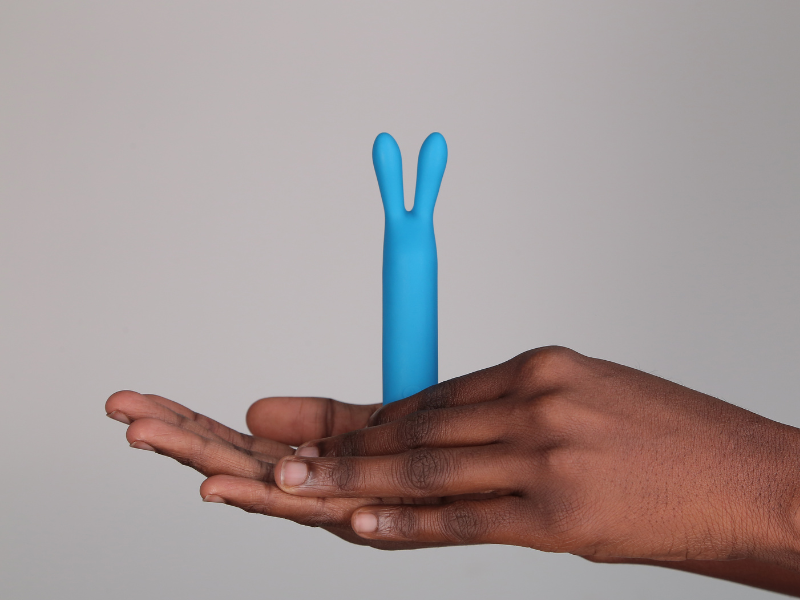
As A Woman With Pelvic Pain, I Felt Left Out Of All Conversations Around Intimacy. Here’s Why Prioritizing My Pleasure Helped Me Heal Decades Of Pain.
As A Woman With Pelvic Pain, I Felt Left Out Of All Conversations Around Intimacy. Here’s Why Prioritizing My Pleasure Helped Me Heal Decades Of Pain.

I have chronic pelvic pain. I’ve had it for as long as I can remember. My pelvic pain stems from over a decade of living alongside illnesses that include but are not limited to; endometriosis, adenomyosis, vaginismus, and just, yanno, general pelvic floor dysfunction. Before I was given the official diagnosis in my early 20s — I believe I was told “Your pelvic floor is fully dysfunctional” — I didn’t even know there was a term or diagnosis for what I was experiencing. I just knew that what I had been taught about sex was that it was pretty much limited to penetration or achieving a mind-blowing orgasm and that meant that I simply wasn’t ever going to be someone who had sex.
I spent most of my adolescence and early twenties believing that I was completely and utterly alone in my inability to have sex. In my mind, everyone of consenting age was having sex. And, of course, I was defining sex in the way I had been taught to define it: Penetration. Or a mind-blowing orgasm. So in my naive mind, everyone around me was probably having sex in hotel rooms, and in their apartments, and in cars. It was spontaneous, and could happen at the drop of a hat (or someone’s underwear.) There was no mention of using vaginal dilators beforehand, or inserting a cannabis suppository to make sure your pelvic floor didn’t spasm. They probably didn’t have to incorporate toys in order to reach full climax. And it never hurt them — these people constantly having sex — or caused a shooting cramp to explode through their uterus. They didn’t have to look random men named Justin in the eyes while they (not so kindly) asked, “What the hell is wrong with you?” And they certainly didn’t have to stick an ice pack into the band of their granny panty-style underwear to ice their vulva to deal with the irritation caused by simply feeling aroused. Because if they did, then why had I never heard about it? Why had every representation of sex I had been exposed to up to this point lead me to believe this never happened? I truly believed, in the depths of my soul, that because I was unable to perform in the traditional sense that I had been taught, that I wasn’t even allowed to talk about sex, let alone think about it at all. If the pool of people who were allowed to have sex was represented by a high school cafeteria table, I would have been found eating alone in a bathroom stall. I wholeheartedly believed, up until my late 20s, that living with pelvic pain meant that I did not deserve to experience sexual pleasure. I thought that if I couldn’t perform it in the way I was supposed to, I was not allowed to be part of it at all.
Now, at 31, I can tell you that I was very, very wrong.
It wasn’t easy. In fact, it took me a really long time, but somewhere along the way in my journey with pelvic pain I realized that what I needed most of all was permission. That was something I had been missing without even realizing I was missing it; permission to want sexual pleasure despite my pain. Permission to allow myself to experience life in a way that I wanted and desired despite my disabilities. I had longed to be told for so long that I was allowed to desire pleasure and intimacy, and no one in my life had ever told me that. No doctor ever looked me in the eyes while I was sobbing on the exam table and told me that sex was not limited to penetration, or that I was allowed to still want to participate in whatever way I was able even if it hurt me sometimes. In fact, I was often told the opposite. Does sex hurt? Then don’t have it! Is orgasming hard on your muscles? Avoid it completely! I had been so focused on the idea of not being allowed into the mysterious “people who have sex” club that I began to unknowingly deny myself. And I never considered that I was in charge of my own pleasure, and moreso, that I was capable of defining intimacy in a way that worked for me.
I began slowly at first. Literally just sitting in my bedroom allowing myself to think about intimacy. To really think about it, and know that it was within my reach if I wanted it to be. I didn’t stop the thoughts as they came to me, I let myself think them, and then I let them pass. Thoughts like; “What if someone doesn’t understand?” What if I cry again?” “What if people don’t want to have sex in a way that doesn’t involve penetration?”
Then, I began going to pelvic floor physical therapy and becoming re-acquainted with the area of my body that I had neglected and attempted to ignore for so long. My vagina, my vulva, this part of me that had felt so disconnected from the rest of my body for so long was simply doing its best to survive the agony that my diseases had caused. This part of my body wasn’t against me, it was just scared. And so was I. We were one. And then, what may have been one of the most important things of all, was that I allowed myself to purchase a vibrator. I sat with it at first, not using it, just sitting there and allowing myself to be in its presence and reminding myself repeatedly that it was not there to hurt me. My body was not there to hurt me. In reminding myself of these things, I was able to also remind my body that not every encounter with my vagina had to end in pain. Some would. But some would not. Some of these encounters would allow me to feel fully human for the first time in years.
Toys helped a lot. In fact, these days, it’s still pretty difficult for me to reach orgasm without toys. And while reaching orgasm is not my main goal by any means, it does happen for me sometimes. Being able to incorporate toys as an added asset and a tool to help my body relax and be in the moment is a gift that I am so glad I was able to give myself without shame. People do not apologize for taking Aspirin when they have a headache, so why should I apologize for using a vibrator to give myself pleasure and help reduce my overall pelvic pain?
Not only do I deserve sexual pleasure and intimacy, but I am allowed to have it. And it’s good for me! Because as much as society may want us to, we cannot define sex and intimacy in such narrow terms. Sex has never been limited to straight people and penetration, or with the sole goal of reaching climax. People have sex and share intimacy in 1,000 different ways every single day. There is real intimacy and pleasure to be had by throwing our previous ideas of what sex is out the window and allowing ourselves to reimagine what it can be. One of the best things I have ever given myself is the permission to believe that I, too, deserved pleasure in spite of my pelvic pain. I no longer view myself as an outsider — someone who can’t have sex. Because I do have sex! I have sex with my partner, and I have sex with myself. I have sex on good days, and I have sex on bad days. I have sex using toys, and sex where I am still half-clothed. And I have sex that doesn’t involve penetration at all, and sex that doesn’t have to end in a full orgasm. I have sex in my own way, on my own terms, and I know that it is enough.
So if you, like me, live with pelvic pain and have ever believed that sex was not something you could participate in, I am here to tell you (kindly) that you’re wrong. Because sex is no longer something that we are going to allow people to define for us. We are going to define it for ourselves. And not only are we going to know that we can have sex, we are going to believe that we deserve it just as much as anyone else. In whatever way we are able. And we are going to know that it’s more than enough.
ABOUT THE AUTHOR
 Lara Parker
Lara ParkerLara Parker is a writer, editor, and author living in Los Angeles. Her first book, Vagina Problems, debuted in 2020. Lara is an advocate for those with chronic pelvic pain and has actively shared her journey with many to promote awareness of endometriosis and create a space where others can feel seen and heard. You can follow Lara on Instagram on @laraeparker,




Leave a comment
This site is protected by hCaptcha and the hCaptcha Privacy Policy and Terms of Service apply.